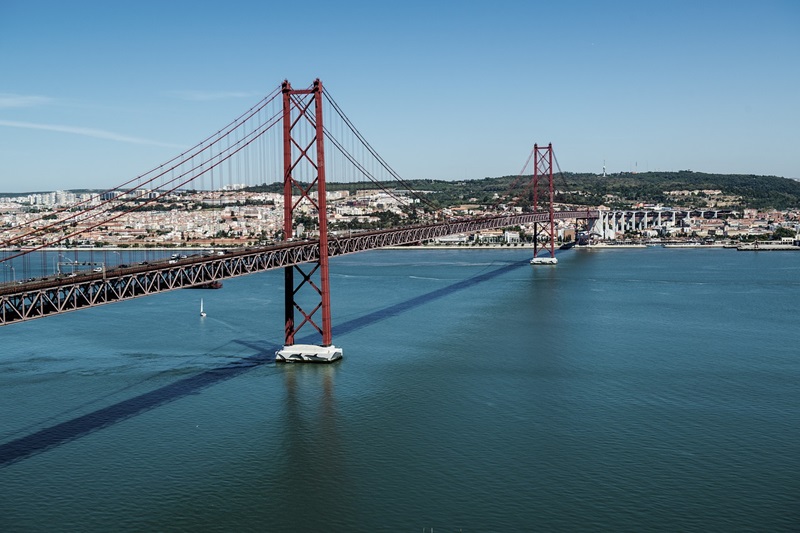The Lisbon region is about to undergo a significant transformation with the implementation of four major infrastructure projects that promise to revolutionize its connectivity and boost the local economy. These billion-dollar developments include the new airport, the third crossing of the Tagus, and high-speed rail lines that will connect Lisbon to Madrid and Porto-Vigo. Together, these projects will not only modernize the capital’s infrastructure, but also raise the city’s profile in terms of mobility and urban development.
With the completion of these projects, Lisbon will position itself as a major transport and business hub in Europe, boosting tourism and attracting new residents and investors. For those seeking investment opportunities, the timing is ideal: the real estate market is expected to experience significant appreciation as new infrastructure creates greater demand for properties and new areas gain relevance. Understand how these projects could influence the market and why this is one of the most promising times to invest in Lisbon.

1 – New Luís de Camões Airport
The new airport that will serve the Lisbon region, named Luís de Camões Airport, will be built at the Alcochete Shooting Range (south bank of the Tagus River), and is scheduled for completion in 2034. The project aims to solve the saturation of the current Humberto Delgado Airport, whose capacity currently does not support the growing demand for passengers.
The strategic location in Alcochete was chosen for several reasons, including its proximity to Lisbon and its expansion capacity, which could go beyond the two runways initially planned, which will be essential to meet the growing demand for passengers until 2050. In addition, the area at the Shooting Range minimizes expropriations, reducing costs and bureaucratic complexities associated with these processes. Another decisive factor was that the region already has previous environmental analyses favorable to the project, although a new assessment is still necessary.
Until the new airport is completed, Humberto Delgado Airport will continue to operate at an increased capacity to meet growing demand, with a target of 45 movements per hour and an annual flow of 40 to 45 million passengers.

2 – Lisbon-Madrid TGV
The high-speed line project that will connect Lisbon to Madrid is one of the great promises of railway integration in the Iberian Peninsula and reflects a joint commitment between Portugal and Spain to strengthen their transport connections. Recently, Spanish Prime Minister Pedro Sánchez reaffirmed the Spanish government’s commitment to speeding up the implementation of this line. Originally scheduled for completion in 2034, the railway will reduce travel time between the two capitals to just three hours, a significant improvement on the current nine hours. Learn more about the Lisbon-Madrid TGV

3 – Third Tagus Crossing (TTT)
The Third Tagus Crossing is an ambitious project that aims to connect the Chelas neighborhood in Lisbon to the city of Barreiro, on the south bank of the Tagus River. The bridge will complement the current 25 de Abril and Vasco da Gama bridges and will include both road and rail lanes, playing a fundamental role in the mobility of the metropolitan region.
The new bridge will reduce travel time by 10 minutes on the Lisbon-Barreiro route and by 30 minutes on the Lisbon-Setúbal route, in addition to allowing unrestricted rail freight traffic. It will also strengthen the suburban rail supply, improving the Cintura, Sintra and North-South lines. The proposed solution, which consists of a structure with a railway track at the bottom, will be essential for accessibility to the future Luís de Camões Airport and will be a key part of the success of the Lisbon-Madrid TGV project. Find out more
4 – Lisbon-Porto-Vigo Train Line
The future high-speed line that will connect Lisbon, Porto and Vigo promises to significantly transform the mobility landscape in Portugal and the Iberian Peninsula. With the completion of this project, the journey between Lisbon and Porto is expected to take just one hour and 15 minutes, with strategic stops in cities such as Gaia, Aveiro, Coimbra and Leiria, increasing accessibility to important urban centers and boosting the local economy. The Porto-Vigo stretch, in turn, is designed to take around 50 minutes, facilitating exchanges between Portugal and Galicia, in Spain.
The project will be implemented in phases. The first phase, connecting Porto to Soure, is expected to be completed by 2030. The second phase, which runs from Soure to Carregado, is scheduled for completion in 2032, ensuring a connection to Lisbon via the existing Northern Line. However, the extension from Porto to Vigo, passing through stations in Braga, Ponte de Lima, Valença and Francisco Sá Carneiro Airport, is scheduled for after 2030, consolidating a high-speed network that facilitates both passenger transport and economic potential between the two countries.
Investment Opportunity with CAP International
With billions in investment expected in Lisbon over the next few years, the region’s real estate market is at a critical juncture, with the potential for impressive returns. Major projects such as the new airport and new railway lines are poised to boost property values, making this the ideal time for those looking to diversify their investments. CAP International, a global real estate specialist, offers personalized support so that investors can identify and take advantage of the best opportunities in the market. Chat with Bruna Barros now on WhatsApp: +351 91 252 9806 and start planning your next investment.
